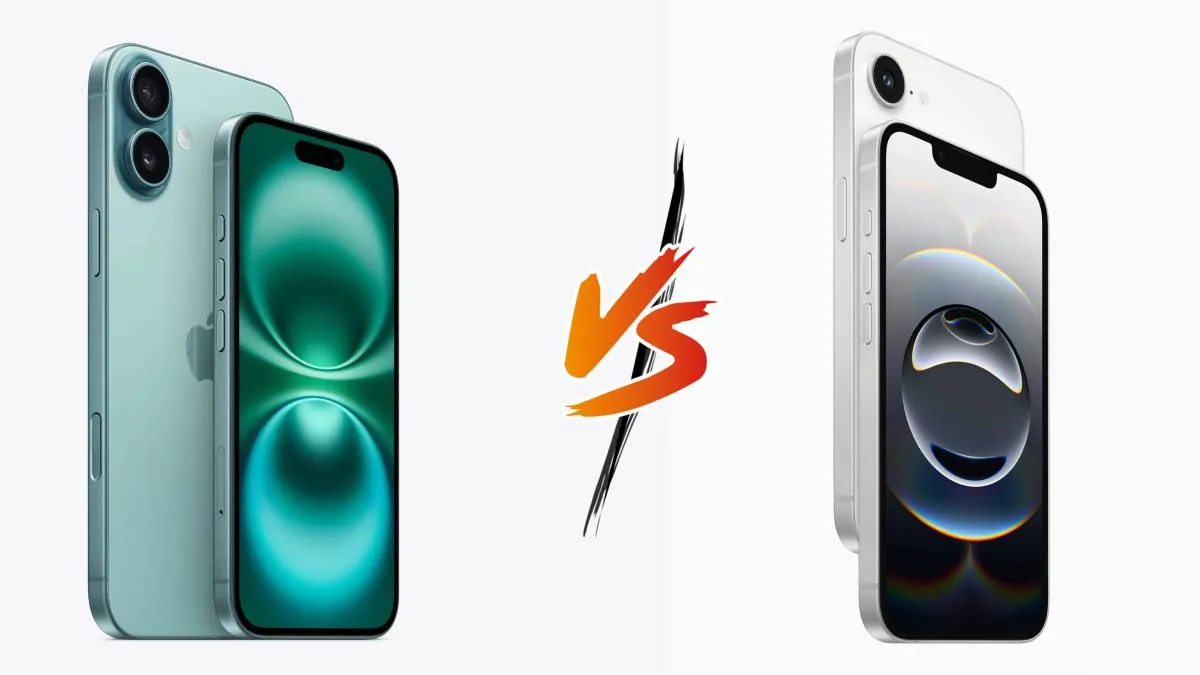iPhone 16e vs. iPhone 16: Budget-Friendly or Cutting Corners?
Compare the iPhone 16e and iPhone 16 to see if the budget-friendly model is worth the savings or if it sacrifices too much in design, performance, and features.

Apple’s iPhone lineup continues to expand, and in 2025, a new addition is generating buzz: the iPhone 16e. Positioned as a more affordable variant of the iPhone 16, the iPhone 16e aims to bring Apple’s latest technology to a broader audience. But how does it compare to the standard iPhone 16? Is the cost-cutting worth it, or does the 16e sacrifice too much? Let’s dive into the key differences between these two models to help you decide which one is right for you.
Design and Build: Premium vs. Practical
The iPhone 16 retains Apple’s signature premium design with an aluminum frame and a ceramic shield front. The glass back supports MagSafe charging, ensuring a sleek yet durable build.
The iPhone 16e, on the other hand, is expected to feature a more simplified design, potentially using a polycarbonate or recycled aluminum back to reduce costs. It may also forgo MagSafe, opting instead for standard Qi wireless charging. Despite these changes, Apple is likely to maintain a high-quality feel with a slim, lightweight profile that appeals to budget-conscious consumers.
Display: High Refresh Rate or Standard Performance?
The iPhone 16 is rumored to sport a 6.1-inch Super Retina XDR display with ProMotion, allowing for a smoother 120Hz refresh rate. This enhances scrolling, gaming, and overall responsiveness.
The iPhone 16e is expected to have a similar-sized OLED panel but may be limited to a 60Hz or 90Hz refresh rate. While this still ensures vibrant colors and deep blacks, users transitioning from a high-refresh-rate device might notice a difference in smoothness. Additionally, peak brightness levels may be slightly lower compared to the iPhone 16.
Performance and Chipset: A17 vs. A16?
One of the biggest differentiators between the two models is the processor. The iPhone 16 is expected to be powered by Apple’s A17 Bionic chip, offering top-tier performance, improved power efficiency, and cutting-edge AI capabilities.
The iPhone 16e may stick with the A16 Bionic chip from the previous generation. While still powerful, it might not match the iPhone 16 in handling the latest iOS updates, intensive gaming, or professional-grade apps. However, for most everyday tasks like browsing, messaging, and streaming, the A16 Bionic should still provide a seamless experience.
Camera System: Versatility vs. Essentials
Apple consistently prioritizes camera innovation, and the iPhone 16 is expected to feature a dual-camera system with a 48MP main sensor and a 12MP ultra-wide lens. It may also include improved night mode, AI-enhanced computational photography, and new video recording capabilities.
The iPhone 16e will likely retain a dual-camera setup but may use a slightly lower-end sensor or omit some of the software enhancements found in the iPhone 16. Features like ProRAW, Cinematic Mode at 4K resolution, or advanced night photography may be absent or scaled down to maintain affordability.
Battery Life and Charging: Fast Charging or Compromises?
Battery life is always a crucial factor, and the iPhone 16 is expected to feature a slightly larger battery than its predecessor, combined with the efficiency of the A17 Bionic chip. Apple may also introduce 35W fast charging for quicker refueling.
The iPhone 16e, with its A16 Bionic chip and potentially a smaller battery, may not match the endurance of the standard iPhone 16. Charging speeds might also be capped at 20W, meaning slightly longer charge times. Additionally, as mentioned earlier, MagSafe might be missing, requiring users to rely on wired or basic wireless charging solutions.
Software and Features: iOS 19 Experience
Both the iPhone 16 and iPhone 16e will launch with iOS 19, ensuring access to Apple’s latest software innovations. Features like AI-driven Siri enhancements, improved privacy controls, and better multitasking will be available on both devices.
However, the iPhone 16e may lack exclusive software perks designed for higher-end models, such as Apple Pencil compatibility or ProMotion-enabled UI animations. Additionally, some AI-driven camera enhancements might be exclusive to the iPhone 16 due to its newer chipset.
Price and Value: How Much Will You Save?
Apple hasn’t officially announced pricing, but based on past trends, the iPhone 16 is expected to start around $799, maintaining its premium mid-range positioning.
The iPhone 16e, on the other hand, could be priced between $599 and $649, making it an attractive choice for budget-conscious users. The question remains: is the $150-$200 savings worth the potential compromises in build quality, refresh rate, chipset, and camera capabilities?
Who Should Buy Which Model?
-
Choose the iPhone 16 if: You want the latest performance, high-end camera features, a premium build, and a 120Hz display for a smoother experience.
-
Choose the iPhone 16e if: You’re looking for a more affordable iPhone with solid performance, good battery life, and a decent camera system without the premium price tag.
Final Thoughts
The iPhone 16e serves as a compelling alternative for those who want an Apple experience without the higher cost of flagship models. While it cuts some corners in display, performance, and build, it remains a strong choice for everyday users who don’t need the absolute latest and greatest.
For those who demand the best Apple has to offer in 2025, the iPhone 16 remains the better investment. But if affordability is the priority, the iPhone 16e could be the budget-friendly solution many users have been waiting for.
What's Your Reaction?

















.jpg)